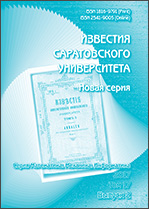|
This article is cited in 7 scientific papers (total in 7 papers)
Mechanics
Hemodynamics and mechanical behavior of pathologically tortuous carotid arteries
O. E. Pavlovaa, D. V. Ivanova, À. À. Gramakovaa, Ê. Ì. Ìîrozovb, I. I. Suslovc
a Saratov State University, Educational-Research Institute of Nanostructures and Biosystems
b I. M. Sechenov Moscow Medical Academy
c Yaroslavl State Medical Academy
Abstract:
The numerical analysis of blood flow through anatomically real healthy and pathologically tortuous bifurcation of human carotid was carried out. Experimental velocity field data in carotid bifurcation were obtained using noninvasive technology. 3D computer models based on computer tomogram were built. The material of the wall
is assumed to be linear isotropic. Comparative analysis of obtained data for healthy and pathologically tortuous carotid shows qualitative influence of carotid bend upon blood flow behaviour. Maximumvalues of pressure shift to convex surface of the bend, and maximum values of velocity shift to opposite side. That leads to blood flow asymmetry in tortuosity cross section. Wall shear stress decreases significantly at convex surface of the bend. Thus pathological tortuosity presence creates favorable conditions for atherogenesis.
Key words:
biomechanics, carotid, pathological tortuosity, finite element method.
Citation:
O. E. Pavlova, D. V. Ivanov, À. À. Gramakova, Ê. Ì. Ìîrozov, I. I. Suslov, “Hemodynamics and mechanical behavior of pathologically tortuous carotid arteries”, Izv. Saratov Univ. Math. Mech. Inform., 10:2 (2010), 66–73
Linking options:
https://www.mathnet.ru/eng/isu23 https://www.mathnet.ru/eng/isu/v10/i2/p66
|

|




 Contact us:
Contact us: Terms of Use
Terms of Use
 Registration to the website
Registration to the website Logotypes
Logotypes








 Citation in format
Citation in format 
